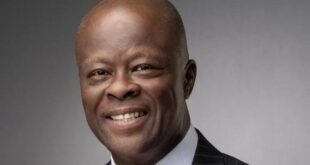Nigeria’s chances of a net zero target remain hobbled, with over 40 per cent of all used vehicles distributed worldwide coming into three African countries led by Nigeria.
A McKinsey & Company report on the continent’s effort at meeting the emissions reduction goal further indicated that 80 per cent of all four-wheeler vehicles end up in sub-Saharan Africa.
Speaking at COP 26 recently, President Muhammadu Buhari explained that Nigeria was aiming to achieve net-zero emissions by 2060, which is to ensure that the amount of greenhouse gas produced is equivalent to what is removed from the atmosphere.
This means that as carbon is being released, it is also being removed from the atmosphere such that emissions are reduced to zero in order to stabilise global temperatures.
The United Nations had said global carbon dioxide emissions would need to reach net zero around 2050 to limit the disastrous effects of climate change.
Speaking on Nigeria’s plans during the climate change conference in Glasgow, Buhari had said that climate change was ravaging all regions of Nigeria, but noted that the country was committed to tackling its impacts.
“There is an urgent need for action on the environment. Desertification in the north, floods in the centre. Pollution and erosion in the coast are enough evidence. For Nigeria, climate change is not about the affairs of tomorrow but what is happening today,” he said.
But the McKinsey report stated that Internal Combustion Engine (ICE) vehicles remain a veritable source of emissions in Nigeria as well as in other African nations, noting that with the country and the continent becoming a dumping ground for such high emission machines, the net zero target was endangered.
It stated that while Nigeria has 25 vehicles per 1,000 persons , it was 17 for Kenya and two for Ethiopia, although it’s 180 on the average globally, with a vehicle life expectancy of 15 to 20 years for cars and two to five years for motorcycles.
“Of all used vehicles, 40 per cent end up in Africa, while more than 80 per cent of all four wheeler vehicles are end up in sub-Saharan Africa with the average price of a used vehicle being $6,000 to $10,000,” it said.
McKinsey stated that globally, the automotive future was looking increasingly electric, due to growing regulatory moves, including forthcoming bans on sales of internal combustion engine vehicles, shifting consumer behaviour, and ongoing improvements in battery and charging technology in other parts of the world.
By 2035, it explained that the world’s major automotive markets—the United States, European Union, and China—are expected to sell only electric vehicles (EVs), and by 2050, 80 per cent of the world’s vehicle sales are expected to be electric.
“Transport currently makes up 10 per cent of Africa’s total greenhouse gas (GHG) emissions, which is expected to increase in line with sub-Saharan Africa’s expanding vehicle parc, all registered vehicles within a defined geographical area.
“In the six countries that make up around 70 per cent of sub-Saharan Africa’s annual vehicle sales and 45 per cent of the region’s population (South Africa, Kenya, Rwanda, Uganda, Ethiopia, and Nigeria), the vehicle parc is expected to grow from 25 million vehicles today to an estimated 58 million by 2040, driven by urbanisation and rising incomes.
 The Commerce Africa African Reneissance
The Commerce Africa African Reneissance


